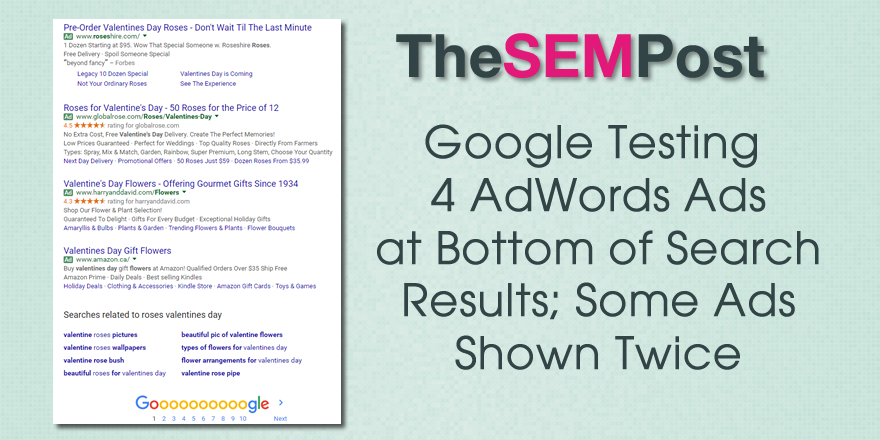 Google is testing some significant changes to how AdWords ads are displayed in the Google search results and it will have a major impact on advertisers, particularly those who are enjoying the top position in AdWords. Not only is Google testing 4 ads at the bottom of the search results, for a total of eight ads on the page, they are also testing showing the same ad twice, once at the top of the top set of four ads, and once at the top of the bottom set of four ads.
Google is testing some significant changes to how AdWords ads are displayed in the Google search results and it will have a major impact on advertisers, particularly those who are enjoying the top position in AdWords. Not only is Google testing 4 ads at the bottom of the search results, for a total of eight ads on the page, they are also testing showing the same ad twice, once at the top of the top set of four ads, and once at the top of the bottom set of four ads.
Here is some examples showing the full screen shot (click to enlarge).
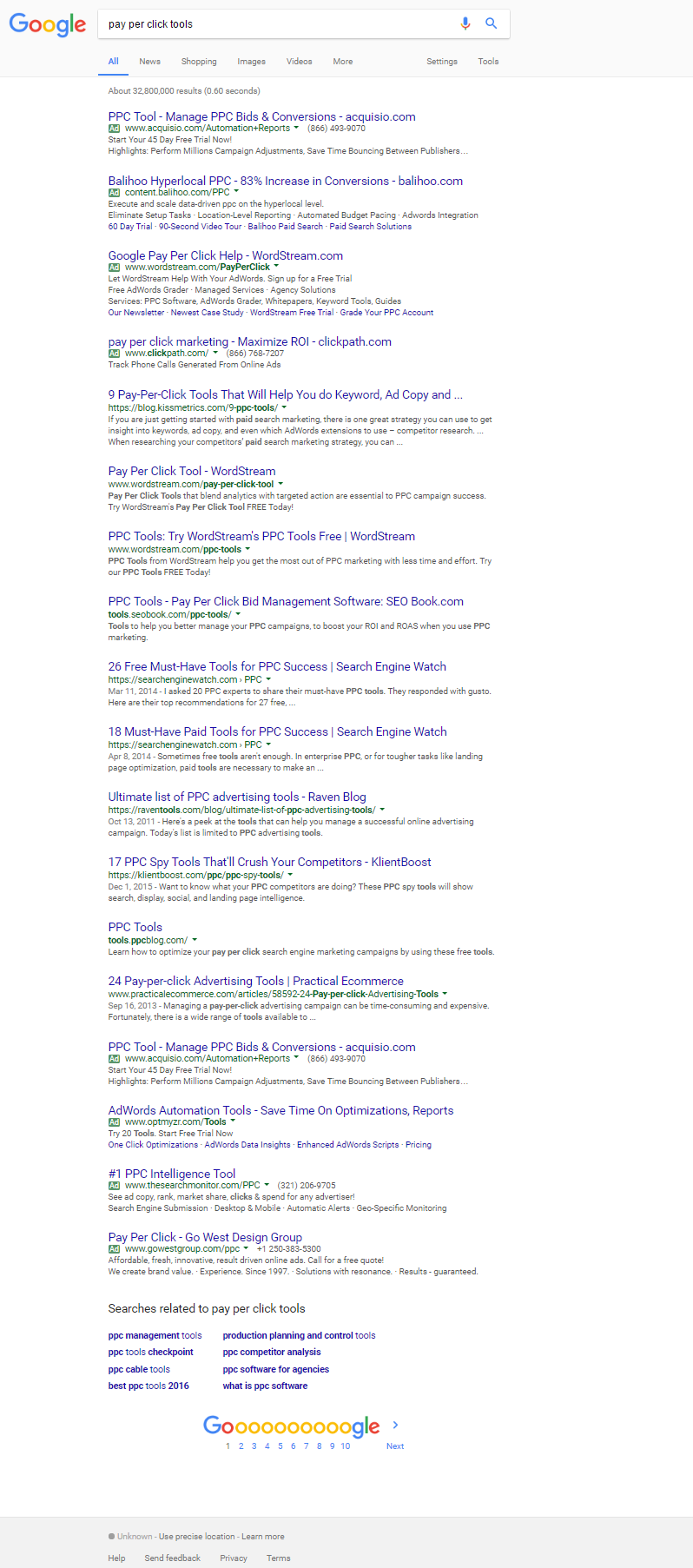
And another example, this one showing the Product Listing Ads at the top and four ads at the bottom:

However, what makes this test particularly interesting is that Google is showing the top ad from the top of the search results and showing it in the top of the bottom for ads two. This gives the advertiser rewarded with the top position for their bid and quality score a double reward by showing it as the top ad on the bottom set of 4 ads too, doubling the chances this ad gets clicked on.
Repeated searches showed 4 ads at the bottom, in addition to either 4 ads at the top (for eight AdWords total) or a combination at the top of ads with Product Listing Ads and AdWords ads, with 4 ads at the bottom.
I did check the first few examples closely, to make sure that there wasn’t any nefarious shenanigans with how those ads were displayed, such as an advertiser using similar ads with different URLs to bypass the usual rules about not showing two ads on the same page.
It is also noted that the ads were always identical – so the ad shown at the top would show exactly the same in the bottom 4. There was never a change in the ad copy, URLs, sitelinks etc. However, this could be a technical limitation on Google’s side.
Here are some more screenshots showing just the bottom 4 ads for a variety of search queries.
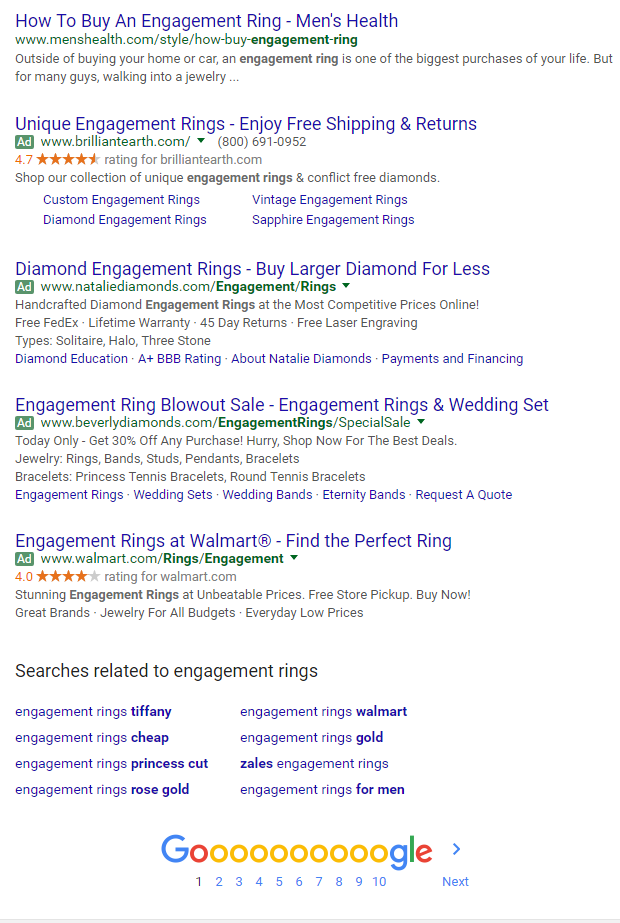
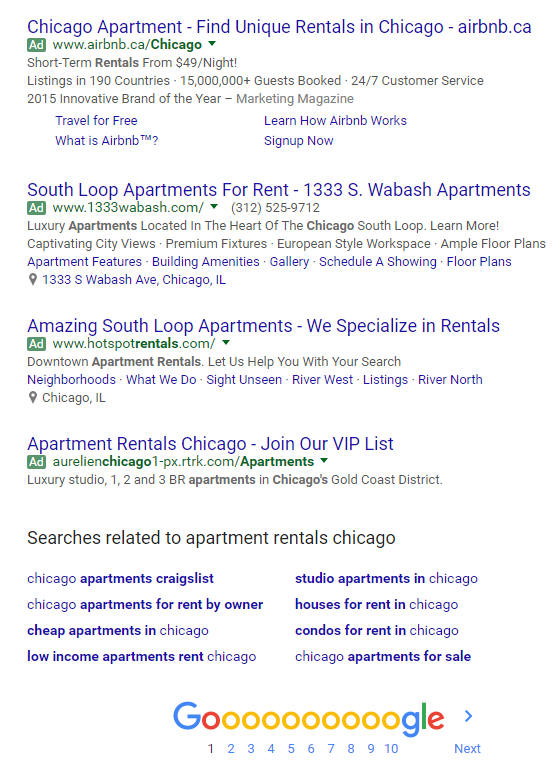


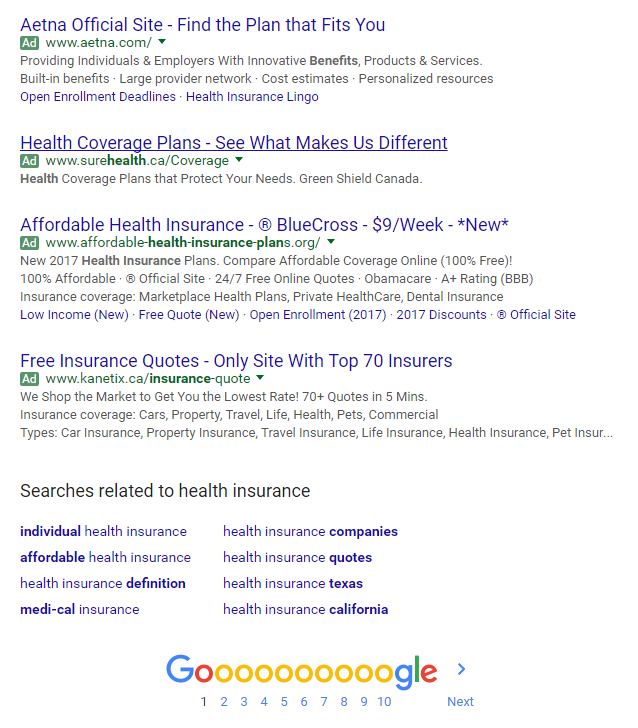
There doesn’t have to be a full compliment of ads on the page to show the top ad twice. Once of the first examples I discovered showed the top ad twice, at the top of the top 3 ads and the top of the bottom 3 ads – for a total of only 6 ads on the page. So while they weren’t adding an eighth ad overall, they still were showing the top ad twice.
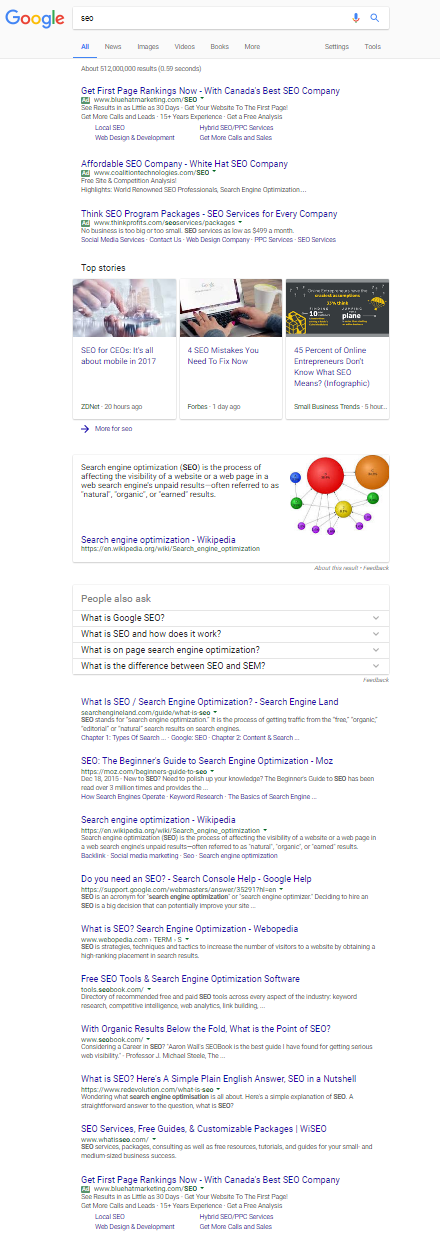 From an advertiser perspective, for those in the top spot, this is really great news – there have been studies that show the top ad in the bottom set of AdWords ads can perform quite well even when compared to one of the lower placed top ads. And this gives those advertisers a bigger bank for the buck, both for exposure and the increase chance of a click.
From an advertiser perspective, for those in the top spot, this is really great news – there have been studies that show the top ad in the bottom set of AdWords ads can perform quite well even when compared to one of the lower placed top ads. And this gives those advertisers a bigger bank for the buck, both for exposure and the increase chance of a click.
From an SEO perspective, this doesn’t really have an impact since the ads appear below the organic results. This test doesn’t change anything about the organic results, nor push them down further. It just shows an additional ad before the searcher gets the option of clicking on the next page of results.
Of course, it could make things interesting on the reporting end. Does it show as double impressions and how would the cost be calculated, since normally ads at the lower part of the page pay less than the ones at the top, although this can also be influenced by things like Quality Score (meaning sometimes advertisers will pay more for their ads to be displayed when compared to other advertisers on the same page, even if appearing lower within the set of ads).
More to the point, will an advertiser pay less if their ad is clicked in the lower set of ads as opposed to the top set of ads? Or if changed at the top rate, would it just be considered as the cost of appearing twice? I can’t imagine advertisers being upset if their ad appears twice – after all it is something that is against the Google AdWords rules to appear twice through nefarious means in the same search results.
This is a test, although I did see it for most of the day. I haven’t seen any other reports of others seeing it – I might not have noticed if it wasn’t for the fact I saw a duplicate ad – it wasn’t until an additional search that it happened to show 4 ads at the bottom, with the top one being duplicated.
Will Google roll this out further? Hard to say, but it doesn’t really have a downside, and it does have a lot of advantages to being that top advertiser. And it would likely make it a much more aggressive bidding environment if advertisers are trying to get that top position for the chance at the double ad exposure within the same search result.
I have reached out to Google, I will update when I hear back.